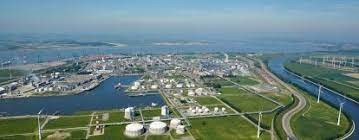News
BASF roadmap to net-zero emissions includes H2, CCS

BASF revealed it has set even more ambitious goals on its journey to climate neutrality and wants to achieve net-zero emissions by 2050. Based on the most recent progress in developing low-emission and CO2-free technologies, the company is also significantly raising its medium-term 2030 target for reductions in greenhouse gas emissions: the company now wants to reduce its greenhouse gas emissions worldwide by 25% compared with 2018 – and to achieve this despite targeted growth and the construction of a large Verbund site in South China. Excluding the effects of the planned growth, this means cutting CO2 emissions in half in the current business by the end of this decade.
To achieve CO2-free production of hydrogen, BASF is pursuing two processes in parallel: the commercially available water electrolysis and methane pyrolysis, for which BASF has developed a new process technology. Another important lever to increase energy efficiency is the use of electrical heat pumps to produce CO2-free steam from waste heat. BASF’s goal is to work with Siemens Energy to gradually ramp up this technology to industrial scale and use it for waste heat recovery at entire site.
In addition to planned investments in renewable energies, BASF is pursuing a number of specific flagship projects, including:
- Developing methane pyrolysis technology for the CO2-free production of hydrogen from natural gas. Compared to other processes for emission-free hydrogen production, methane pyrolysis requires only around one-fifth as much electrical energy. A pilot reactor has been constructed in Ludwigshafen and is being started up. Funding for this project was provided by the German Federal Ministry of Education and Research.
- In collaboration with Siemens Energy, BASF is currently investigating possibilities for the construction of a PEM (proton exchange membrane) water electrolysis system with a capacity of 50 MW for CO2-free production of hydrogen from water and electricity at the Ludwigshafen site. This CO2-free hydrogen would be primarily used as a raw material in the Verbund but would also be used to a limited extent to support the launch of the mobility market in the Rhine-Neckar metropolitan region.
- At the Antwerp site, BASF is planning to invest in one of the largest carbon capture and storage (CCS) projects under the North Sea. Together with partners in the Antwerp@C consortium, this creates the opportunity to avoid more than 1 MM metric t of CO2 emissions per year from the production of basic chemicals. A final investment decision is targeted for 2022

